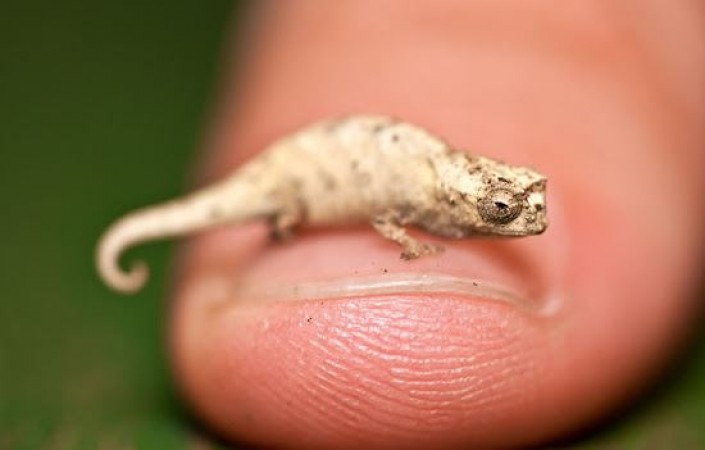
In the diverse world of mammals, one creature stands out for its exceptional diminutive size and captivating charm—the bumblebee bat, also known as Kitti's hog-nosed bat. This minuscule marvel holds the title of the smallest mammal globally, showcasing remarkable features and fascinating behavior that captivates researchers and nature enthusiasts alike. In this article, we will explore the enchanting world of the bumblebee bat, delving into its physical attributes, habitat, behavior, and significance in the ecosystem.
The Discovery of the Bumblebee Bat:
The bumblebee bat was first discovered in 1974 by Kitti Thonglongya, a renowned Thai zoologist. He stumbled upon these tiny creatures in the limestone caves of western Thailand. Their size and unique characteristics astounded the scientific community, sparking curiosity and interest in these elusive beings.
Physical Characteristics:
Size and Weight:
The bumblebee bat's size is its most extraordinary trait. With an average length of about 1.1 to 1.3 inches (2.8 to 3.3 cm) and a weight of approximately 2 grams, they can easily fit on a human fingertip. Such minuscule dimensions make them even smaller than some insects, granting them the title of the world's smallest mammal.
Wingspan:
Despite their tiny size, the bumblebee bat possesses a disproportionately large wingspan. Their wings, measuring about 5.7 inches (14.5 cm) from tip to tip, enable them to perform aerial acrobatics and agile flights.
Color and Fur:
These captivating creatures showcase a distinctive appearance with their reddish-brown or greyish-brown fur, which provides excellent camouflage in their natural habitat. Their fur is velvety in texture, adding to their endearing charm.
Unique Nose Structure:
The bumblebee bat's name is derived from its peculiar nose structure. Their nostrils are tubular and protrude like a pig's snout, aiding in echolocation and honing in on their prey with precision.
Habitat and Distribution:
Bumblebee bats primarily inhabit limestone caves and their surrounding areas in Thailand and Myanmar. The bats are highly adapted to living in these dark and enclosed spaces, where they roost during the day and venture out to feed at dusk.
Feeding Habits:
Being insectivores, the bumblebee bat's diet consists mainly of small insects, including mosquitoes, beetles, and moths. They use their exceptional echolocation abilities to detect and capture prey during their nocturnal hunting escapades.
Reproduction and Life Cycle:
The bumblebee bat's reproductive habits are as intriguing as their small size. Female bats usually give birth to a single pup, which they nurture and protect diligently. The gestation period is relatively short, lasting only a few months.
Threats and Conservation Status:
The bumblebee bat's size makes it vulnerable to various threats, including habitat destruction and disturbance in their cave dwellings. These factors have led to a decline in their population, prompting conservation efforts to protect their natural habitat and ensure their survival.
Importance in the Ecosystem:
Despite their small size, bumblebee bats play a crucial role in the ecosystem. By preying on insects, they help regulate insect populations, contributing to the balance of the ecosystem and preventing potential pest outbreaks.
The Bumblebee Bat's Behavior:
Despite their elusive nature, researchers have observed fascinating behaviors in bumblebee bats. They exhibit social tendencies within their colonies and demonstrate remarkable communication through vocalizations and body language.
Interactions with Humans:
Human interactions with bumblebee bats are minimal due to their remote habitats. However, these captivating creatures have sparked interest among researchers and nature enthusiasts, leading to efforts to study and conserve their populations.
Fascinating Facts about the Bumblebee Bat:
Comparison to Other Small Mammals:
When comparing the bumblebee bat to other small mammals, such as the Etruscan shrew and the pygmy mouse, its size still reigns supreme, earning it the esteemed title of the world's smallest mammal.
In conclusion, the bumblebee bat, with its diminutive size and captivating characteristics, stands as a testament to the wonders of nature's diversity. Their uniqueness and ecological importance remind us that even the tiniest of creatures play an essential role in maintaining the delicate balance of our ecosystem.
Love Knows No Boundaries: LGBTQ+ Weddings in Contemporary India
"Indian Cuisine: A Melting Pot of Diverse Traditions and Modern Trends"
Smart Home Automation: Controlling Your Household with Gadgets and AI Assistants